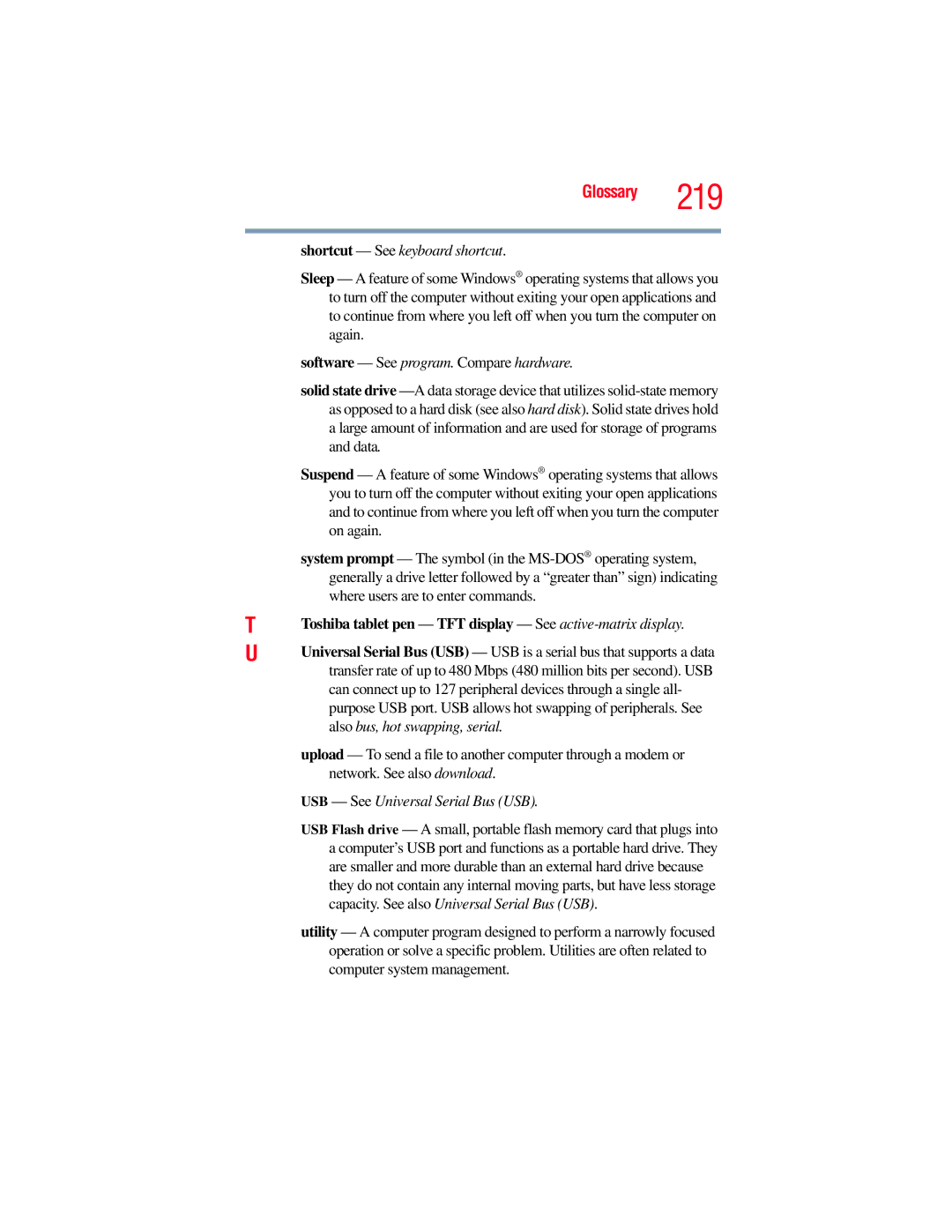Glossary 219
T U
shortcut — See keyboard shortcut.
Sleep — A feature of some Windows® operating systems that allows you to turn off the computer without exiting your open applications and to continue from where you left off when you turn the computer on again.
software — See program. Compare hardware.
solid state drive
Suspend — A feature of some Windows® operating systems that allows you to turn off the computer without exiting your open applications and to continue from where you left off when you turn the computer on again.
system prompt — The symbol (in the
Toshiba tablet pen — TFT display — See active-matrix display.
Universal Serial Bus (USB) — USB is a serial bus that supports a data transfer rate of up to 480 Mbps (480 million bits per second). USB can connect up to 127 peripheral devices through a single all- purpose USB port. USB allows hot swapping of peripherals. See also bus, hot swapping, serial.
upload — To send a file to another computer through a modem or network. See also download.
USB — See Universal Serial Bus (USB).
USB Flash drive — A small, portable flash memory card that plugs into a computer’s USB port and functions as a portable hard drive. They are smaller and more durable than an external hard drive because they do not contain any internal moving parts, but have less storage capacity. See also Universal Serial Bus (USB).
utility — A computer program designed to perform a narrowly focused operation or solve a specific problem. Utilities are often related to computer system management.
